Clarification of terms: The CPSC Handbook uses the term “guidelines,” ASTM uses “standards,” and states use “regulations.” All three terms essentially mean “requirements” because of their legal status and/or their influence in litigation and may be used interchangeably in this article.
Spontaneous play and school recess are disappearing throughout the United States, and new schools are being built without playgrounds (Pica, 2003; 2005). This is contributing to a potential “perfect storm” damaging children’s physical, cognitive, social, and emotional development and contributing to serious childhood health problems (Gabbard, 2000; Sutterby & Frost, 2002). Several interrelated factors are implicated in these problems: high-stakes testing, substitution of technology entertainment for spontaneous outdoor play, parental fear of criminal activity, playground safety standards, and lawsuits. This post addresses two elements of this “perfect storm” – safety standards and lawsuits.
The Consumer Product Safety Commission (CPSC) Handbook for Public Playground Safety, widely used by consumers and others, and the American Society for Testing and Materials (ASTM) Standard Consumer Safety Performance Specification for Playground Equipment or Public Use, widely used by designers and manufacturers, are recognized in litigation as the “national standard of care.” This status resulted essentially from nation-wide adoption by the playground industry, passage into law by several states, and influence in litigation. Many professionals representing a range of disciplines worked tirelessly to develop the standards. Standards committees regularly modified the safety standards, manufacturers consequently modified their equipment, and injury lawsuits mushroomed, in part due to the availability of comprehensive, complex standards for use as “legal evidence.”
According to the National Electronic Injury Surveillance System (NEISS), the number of children injured on playgrounds and treated at emergency rooms since the mid-1970s has increased from about 117,000 to more than 200,000 annually. The reasons for this are not clear. Some claim that reporting is more accurate. Others believe that there are more playgrounds and that more children are playing on them. However, this is questionable, because about 40 percent of public schools have deleted or reduced recess (International Playground Association, USA). Although no conclusive data is available, the writer believes that increased sedentary activity, fewer opportunities for active play, and declining fitness levels make children less able to play safely on challenging equipment and may contribute to injuries.
The University of Texas Play and Playgrounds Research Program, operational at several sites in Austin, Texas, for more than a quarter century, and sponsored by eight playground equipment manufacturers, included original controlled research, interviews with experts, extensive reviews of research literature, and on-line reviews relevant to children’s play, development, and play environments (Frost & Klein, 1979; Frost & Sunderlin, 1985; Frost, 1992; Frost & Sweeney, 1996; Frost, Brown, Sutterby, & Thornton, 2004; Frost, Wortham & Reifel, 2005). This research and related experience were instrumental in forming this paper.
A number of problems have emerged over the years in developing, interpreting, and applying CPSC guidelines, ASTM standards, and state regulations. These problems, discussed below, have become so pervasive and complex it is time to re-evaluate the scope, nature, and implementation of playground safety standards at all levels.
Discontinuity and lack of consistency between state regulations and national guidelines and standards.
A report titled, An Analysis of the State Codes for Licensed Day Care Centers Focused on Playgrounds and Supervision (Wallach, 1990), highlighted the discrepancies between national standards (CPSC, ASTM) and state codes. Wallach found that none of the 50 states had adopted CPSC guidelines or ASTM standards for their child care centers. The state’s playground regulations were brief and general in nature, lacking specific information for identifying potential hazards. This inconsistency between state and national regulations influenced child injury court judgments against child care centers nationwide.
In such litigation, the center owners often unwittingly declared that they had met their state playground safety regulations, apparently not realizing that CPSC and ASTM standards tend to prevail in litigation over limited (compared to CPSC and ASTM) state regulations. Throughout the 1990s, injury site inspections by the plaintiff’s consultants and trial testimony repeatedly revealed that state regulations were limited in scope, and that state inspections and inspection reports, if available, were weak, inconsistent, confusing, and randomly implemented. In one school system, following state adoption of tougher regulations modeled after ASTM in 2003, children using playgrounds at their school during the school day are prohibited from using the same playground in the after-school program because of conflicting playground safety regulations.
How Safety Standards and their Inconsistencies “Dumb Down” the Developmental Values of Playgrounds and Reduce Play Challenges
The CPSC Handbook states (1997, p. 8, Sec. 6.3); “The following items of playground equipment are not recommended for preschool-age children (2 through 5 years):” chain or cable walks, free-standing arch climbers, free-standing climbing pieces with flexible parts, fulcrum seesaws, log rolls, spiral slides with more than one turn, over-head rings, parallel bars, swinging gates, track rides, and vertical slide poles. The Texas playground regulations (2003, Sec. 746. 4605), which are required by law, state: “Children ages two through five years must not be allowed to use the following pieces of equipment at or away from the child-care center: chain or cable walks, free-standing arch climbers, free-standing climbing pieces with flexible parts, fulcrum seesaws, log rolls, spiral slides with more than one turn, over-head rings, parallel bars, swinging gates, track rides, and vertical slide poles. “Neither CPSC, ASTM nor the Texas regulations include a rationale or research basis for this standard.
The extensive research concludes that using upper body equipment on playgrounds is developmentally beneficial for most three- to five-year-old children and should be included in recess and free play periods (Frost et al, 2004).” This conclusion is supported by on-site research, interviews with medical, kinesiology, and child development experts, and extensive reviews of research literature. Excessively obese children were generally the only three-to five-year-old-children experiencing extended difficulties in a mastery of overhead apparatus.
Despite expressed reservations by CPSC, both CPSC and ASTM tacitly approve horizontal ladders for older preschool children. CPSC (1997, pp. 21-22, sec. 12.1.5) claims: “Four-year-olds are generally the youngest children capable of using upper body devices such as horizontal ladders and overhead rings.” Yet both CPSC and ASTM provide dimensions for the design and installation of overhead equipment for preschool children (defined as 2 through 5-year-olds).
When preschool children use overhead apparatus installed at the maximum five feet recommended by CPSC and ASTM, they commonly reach a vertical support post three to five inches in diameter, hug, it and slide down. However, standards will not allow, manufacturers will not design, and inspectors will tag specially designed, thick “hugging poles” installed on 36” decks with resilient surfacing in place because they resemble a sliding pole of the traditional variety. Yet another prohibited or “not recommended” play device, parallel bars mounted at an angle off low decks, provides a wide range of creative motor challenges for preschool children. Such is the case with many of the eleven play devices prohibited or restricted for preschool use. With careful attention to matching the design to children’s developmental needs, most of the eleven pieces of equipment not recommended could provide reasonably safe, yet developmentally challenging options for preschoolers.
Typical freestanding climbing events with flexible components are “not recommended” by CPSC yet such climbers, no more than five feet high and installed over 12 inches of wood mulch or equivalent, are typically climbed with ease by every three-to five-year-old child in child care centers but are frequently ruled out of compliance. If climbers are constructed from solid steel instead of flexible, shock-absorbing components, especially when they are attached to decks, they pass inspections. Creative designers can replace rigidly, steel climber components with flexible climber components that are relatively fall-free (falling directly to the resilient surface), absorb shock in falls and they can design molded plastic climbers with recessed hand and foot-holds that allow children to impact a sliding surface rather than a rigid component in falls. There are superior alternatives to rigid, steel components in the path of falls. The common contention that older preschool children may not be able to safely climb down after climbing up has very limited relevance when opportunities to practice climbing under reasonably safe conditions are established.
Safety standards are misconstrued and applied in unintended ways in litigation, leading to the denial of important play environments for children. Consider one brief CPSC statement (CPSC, 1997, p. 42). “Look out for tripping hazards, like exposed concrete footings, tree stumps, and rocks.” The CPSC is charged with safety for “consumer products,” yet the inclusion of such guidelines leads to claims involving natural materials, such as stumps, tree roots, and rocks, anywhere they are found on playgrounds. For example, a state university system was sued because a child fell over a stump in a small redwood forest adjacent to the organized games area of their laboratory school playground, resulting in a legal judgment against the university system! The language in safety standards must be carefully crafted to avoid unintended consequences in litigation and loss of natural play environments for children.
Excessive Safety Regulations and Loss of Play Opportunities
The requirement that swings must have six feet of surfacing material on both ends of vertical swing support beams needs careful examination. In 30 years of playground work and review of the literature, the writer has not seen an example of a child suffering a serious injury from falling off the vertical support of a swing structure (The writer invites any documented information). Swing fall zones are very “space expensive,” and many child care center operators do not have the required space to install them. This standard imposes unnecessary expense for playground operators and loss of play opportunities for children. Such standards, dealing with the remote likelihood of serious injury, following careful analysis and review of the evidence, could be replaced by an emphasis on the training of playground supervisors. Studies of the incidence and nature of injuries from falls out of swing seats may also lead to a reconsideration of the large expanses of resilient material required in the to-fro swinging direction of swings.
The resilient surfacing immediately under overhead equipment, sliding poles, slide exits, swing paths, and other high-use areas are almost always depleted, and the ground is hard packed, or a concrete base is exposed. Preschool-age children, more likely to lose their grip than are older children, fall onto these hard surfaces. All of the serious injuries in documented falls from sliding poles in the writer’s experience resulted from children falling from excessive heights and/or onto hard-packed surfacing or concrete footings. Engineers can now design surfacing materials for the critical fall areas that are limited in size and expense, stay in place, yet provide far more friendly fall impact than typical, poorly maintained surfacing material. The safe design and installation of equipment and surfacing are frequently negated by poor maintenance and supervision.
Playground specialists, research (Frost & Sweeney, 1995), and National Electronic Injury Surveillance System data (Tinsworth & Kramer, 2000) conclude that falls are the leading cause of injuries on playgrounds (60-70 percent of all injuries and 90 percent of serious injuries). Frost & Sweeney conducted on-site inspections of serious fall injury cases (cases resulting in long-term or permanent damage) resulting from falls and leading to litigation. In all of the cases where original conditions could be assessed, the injury resulted from children falling from apparatus that was too high and/or onto surfaces that were too hard. Installing the equipment at the proper height, maintaining the proper protective surfacing, and in many cases preventing children from using over-sized equipment would have radically reduced the chances of injury in falls.
The school district of a large city with 65 early childhood centers and 65 primary/elementary schools installed 135 expensive superstructures on their playgrounds several years ago. Within a few months of installation, the ASTM standards were revised, and the equipment was ruled out of compliance. The violations were matters of a few inches in deck heights and space between components but would require redesign to comply. Although the equipment is still in good condition in 2005, the school district cannot use it and is deliberating the options of replacing the equipment at a cost of two to three million dollars, taking the equipment out of service, or deleting recess altogether, thus eliminating the financial expenditure and allowing more time to prepare for high stakes testing.
One hazard not addressed in state or national standards but identified during the University of Texas research (Frost, et. al, 2004), is the growing likelihood of obese children becoming entrapped in crawl-through spaces of equipment openings. Obese children are at risk on playgrounds because of the inability to support and control their bodies on challenging equipment and because of the possibility of entrapping their bodies in openings commonly used by their peers. The creation of a national standard or guideline or state regulations addressing this issue could easily result in yet another round of retooling by manufacturers, expensive replacement of existing equipment by schools and parks, and additional bases (standards) to support lawsuits.
What do Playground Designers, Architects, Child Development Professionals, Manufacturers, Installers, Purchasers, Owners, Directors, Administrators, Teachers, Parents, and Children Need?
Delegate responsibility for “low-level hazards” to parents, teachers and others who work daily with children, and focus clearly and precisely on hazards demonstrated through published research and scientific data and analysis to result in permanent injury, disability or fatality. Making decisions about low-level hazards and risks necessary for children’s healthy development should be the responsibility of informed parents and trained professionals. Such a course of action - directing greater emphasis on information and training - places greater responsibility on those closest to children and emphasizes the need for such people to be trained or informed for their respective roles. This also places responsibility on those closest to children to teach them about safety and to practice safe behavior in the presence of children. A degree of risk during play is essential for children’s development.
Limit the prohibition of specific classes or types of equipment and focus on major hazards common across classes and types, emphasizing making each type reasonably safe without sacrificing play value. With creativity, skill, and ingenuity, designers and other professionals can modify most traditional and existing types to accommodate most children.
Provide guidelines, standards, and regulations that are internally consistent and that are consistent across state and national boundaries; standards that are easy to interpret and implement; standards that are simple yet address the hazards that most commonly result in serious injuries and fatalities; standards that are based on scholarly research and provide information for locating sources for that research.
Ensure that committees responsible for developing playground standards at both state and national levels secure assistance and research representing a range of professions: child development, play leadership (supervision), child safety, recreation, education, child development, manufacturing, architecture, engineering, and medicine.
Select and train state and national inspectors who have extensive experience working with children in centers, schools, parks, and playgrounds; inspectors who have been thoroughly trained to inspect playgrounds, who can explain rationales for decisions and can write reports clarifying and documenting those rationales.
Provide annual training on benefits of play, playground leadership and safety for every adult (teacher, teacher aide, play-leader) whose professional role is to supervise children on playgrounds; training that focuses on child safety, play value, and child development, yet training which recognizes that healthy development through play carries a degree of risk.
Develop flexibility and provisions in standards to allow for creative, innovative design and research. Existing and new scholarly research is needed to assist in the reexamination of state and national standards. References to this research should accompany standards and regulations.
Develop strong maintenance programs for all playgrounds. These should include training for maintenance personnel and carefully documented inspection and repair records. These records should be preserved for several years as evidence of prudent, reasonable maintenance, consistent with state and national standards.
Reexamine the continuing pattern of making national playground safety standards ever more complex, focusing on the goal of simplification and relevance to research on play, child development, equipment design, and child injuries and fatalities. One initial step could be symposia featuring researchers from disciplines concerned with children’s play, and multi-disciplinary professionals who work with standards committees. Professional analysis at such symposia could help identify basic regulatory guidelines, rule out superfluous and unnecessary guidelines, and move toward simplicity and relevance. Such analysis would be of considerable value to standards committees.
Children need wild places (compact nature areas), gardens, shallow ponds, water, sand, tools, small animals, and construction materials for their play. Except for such serious hazards as materials that ignite and toxic materials that damage brains and health, playing in nature should be the responsibility of those closest to children. Serious hazards detectable only by laboratory tests should be the responsibility of producers or manufacturers, and such tests should form the rationale for scientific standards.
Direct more energy to educating politicians, parents, childcare professionals, teachers, and school administrators about the disastrous consequences of substituting high stakes testing and technology entertainment for outdoor play and recess. Such ill-informed actions are helping to create an epidemic of stressed out, overweight kids with early physical and emotional health problems. (See Freedman, et al, 1999; Ross & Gilbert, 1985) Play and playgrounds are essential for healthy development. We are now seeing Americans feeling guilty when children take time from academic tasks to engage in free, creative, spontaneous play in the out-of-doors.
References:
- American Society for Testing and Materials (2001). Standard consumer safety performance specification for playground equipment for public use. West Conshohocken, PA: The Society.
- Butwinick, E. (1974). Petition requesting the issuance of a consumer product safety standard for public playground slides, swinging apparatus, and climbing equipment. Washington, D. C: CPSC.
- Consumer Product Safety Commission (1997). Handbook for Public Playground Safety. Washington, D. C: The Commission.
- Freedman, D. S., Dietz, W. H., Sathanur, R. S., & Berenson, G. S.. (June 1999). The relation of overweight to cardiovascular risk factors among children and adolescents: The Bogalusa Heart Study. Pediatrics., 103, 6, 1175-1182.
- Frost, J. L. (1992). Play and Playscapes. Albany, NY: Delmar.
- Frost, J. L, & Klein, B. L. (1979). Children’s Play and Playgrounds. Boston: Allyn & Bacon.
- Frost, J. L.; Brown, P. S., Sutterby; J. A. & Thornton, C. D. (2004) The Developmental Benefits of Playgrounds. Olney, MD: Association for Childhood Education International.
- Frost, J. L., & Sweeney, T. B. (1996). Cause and Prevention of Playground Injuries and Litigation: Case studies. Olney, MD: Association for Childhood Education International.
- Frost, J. L.; Wortham S. C.; & Reifel, S. (2001, 2005, second edition). Play and Child Development. Columbus, OH: Merrill Prentice Hall.
- Gabbard, C. (2000). Physical Education: Should It Be Part of the Core Curriculum? Principal, 79(3), 29-31.
- Pica, R. (2005). “Reading, Writing, ‘Rithmetic – and Recess!” Linkup Parents Newsletter (www.linkup-parents.com). Retrieved Aug. 8, 2005, from www.linkup-parents.com/education.html
- Pica, R. (2003). Your Active Child: How to Boost Physical, Emotional, and Cognitive Development Through Age-appropriate Activity. New York: McGraw-Hill.
- Ross, J., & Gilbert, G. (1985). “The National Youth and Fitness Study.” Journal of Health, Physical Education, Recreation and Dance, 56, 45-50.
- Sutterby, J. A., & Frost, J. L. (2002). Making Playgrounds Fit For Children and Children Fit on Playgrounds. Young Children. 57(3), 36-42.
- Texas Department of Protective and Regulatory Services (2003). “Minimum standard rules for licensed child-care centers”. Austin, TX: The Department.
- Tinsworth, D. K., & Kramer, J. T. (1990). Playground Equipment-Related Injuries and Deaths. Washington, D. C: U. S. Consumer Product Safety Commission.
- Wallach, F. (1990). “An analysis of the state codes for licensed day care centers focused on playgrounds and supervision”. New York: Total Recreation Management Services.

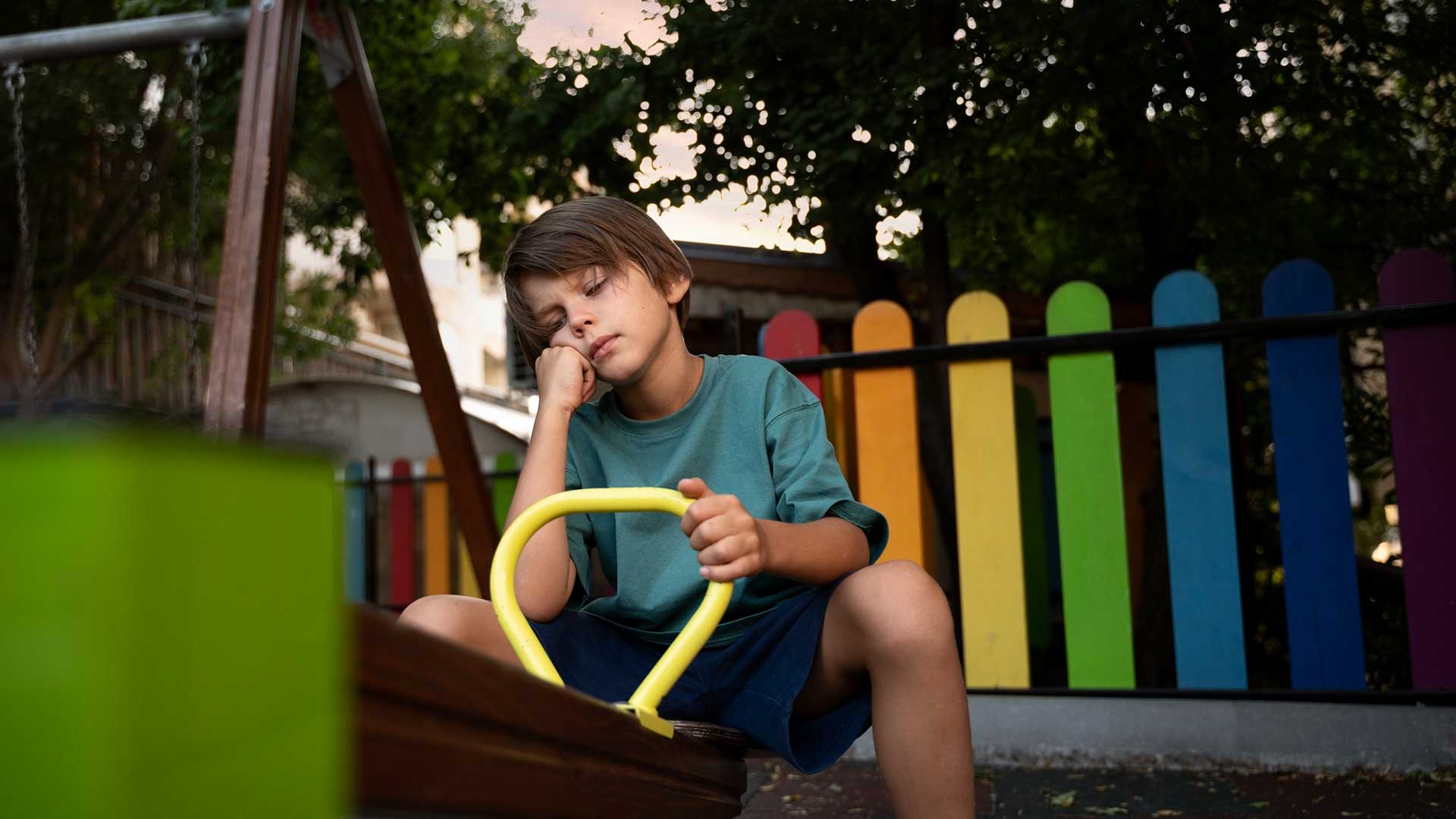

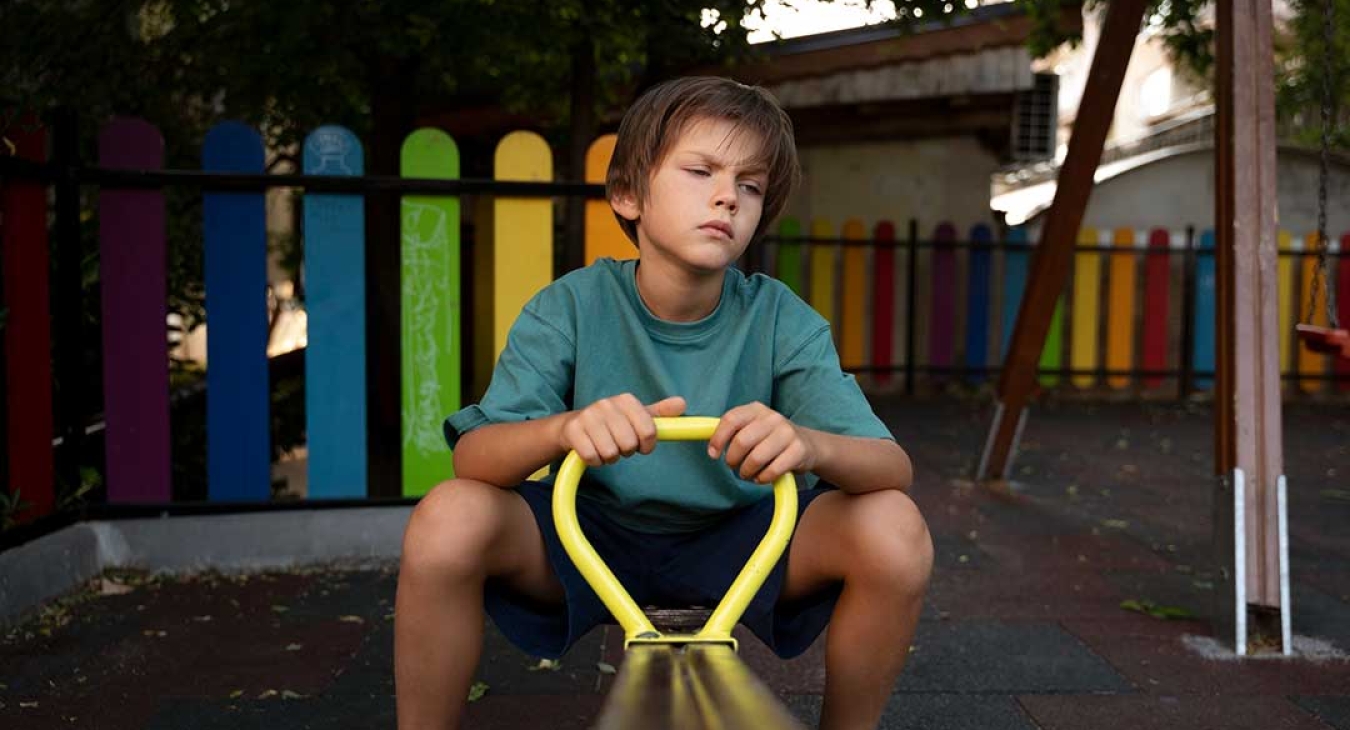
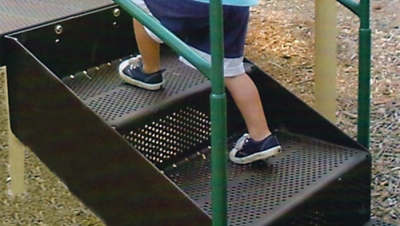
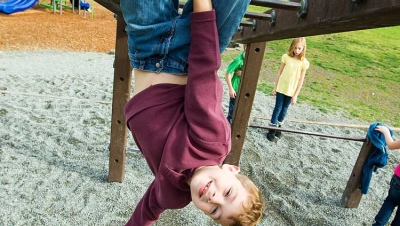
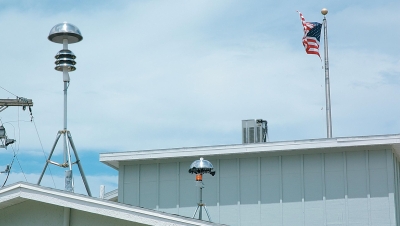







Add new comment